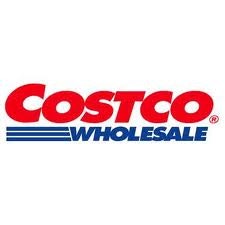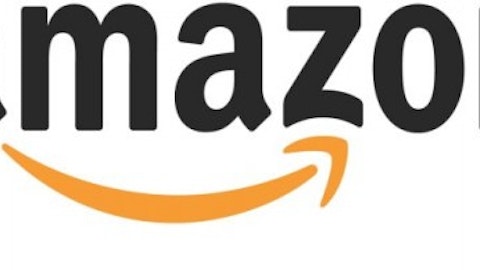Retail is a solid sector for your investing dollars, and Costco Wholesale Corporation (NASDAQ:COST) is a great investment for anyone looking to make money from the economic recovery. Costco trades at a premium, with a P/E ratio of 23.9, and for good reason: management has steadily expanded the business, and the company’s long-term outlook is very bright. There are, however, a couple of companies, such as Wal-Mart Stores, Inc. (NYSE:WMT) and Amazon.com, Inc. (NASDAQ:AMZN), that appear at first glance to be threats to Costco. I argue that Costco Wholesale Corporation (NASDAQ:COST)’s plan for growth is more sustainable than Amazon.com, Inc. (NASDAQ:AMZN)’s, and that the stock’s long-term outlook remains brighter than Wal-Mart’s and Amazon’s. Put another way: if you have to buy one company, buy Costco; leave Wal-Mart and Amazon on the shelf.
Costco’s impressive growth story
Costco Wholesale Corporation (NASDAQ:COST)’s FY 2013 Q3 spanned the 12 weeks ending May 12. Earnings per share clocked in at $1.04 for the quarter, up an impressive 18% from Q3 of 2012. This was in part due to sales expansion of 8% and comparable (same-store) sales growth of a very respectable 5%. Costco expects to add 28 new warehouses in FY 2013, or a 4.6% increase in stores. A large piece of that expansion has been (and will be) in Japan and Taiwan, which helped account for a 19% increase in membership year-over-year. With additional new stores in those two countries, Costco has some great opportunity for immediate growth.
Worldwide, membership renewal stood at 86.4% at the end of Q3 2013. Costco is sacrificing a little in the gross margin category to lower prices, as the value perception is “driving sales, member shopping frequency, member sign-ups and renewals, and market share,” according to the company. Costco Wholesale Corporation (NASDAQ:COST) also has an e-commerce platform, Costco Online, which grew sales by over 20% year-over-year in the U.S. and Canada.
Part of Costco’s incredible story is management’s fantastic treatment of employees. With a starting wage of roughly $12 per hour and the average employee earning $21 an hour, it is no wonder that worker turnover is so low (which saves the company significant recruiting costs). Those high wages allow greater selectivity in hiring, higher worker morale, and a superior guest experience. This particularly compares favorably to Wal-Mart Stores, Inc. (NYSE:WMT).
Threat one: Wal-Mart
Wal-Mart is the obvious threat to Costco Wholesale Corporation (NASDAQ:COST), given that its Sam’s Club concept is a direct competitor. Wal-Mart’s strategy is to slash costs and thereby offer products for cheaper than its competitors. Unfortunately, when this strategy is implemented, customer satisfaction suffers. A customer’s experience with store employees drives their satisfaction with a store visit, and poor employee pay results in lower employee morale and therefore a weaker guest experience at Wal-Mart Stores, Inc. (NYSE:WMT).
Same-store sales decreased by 1.4%, and EPS growth was anemic ($1.14 for Q1 of FY 2014, which aligns most closely with Q1 of calendar year 2013, compared to $1.09 for Q1 of FY 2013).
Wal-Mart has additional problems; its low-road strategy was not sufficient to avoid cannibalization by the dollar-store segment of the market, which performed quite well throughout the recession. Wal-Mart is increasingly squeezed between the superior customer experience at Costco, the price-undercutting from the dollar store and Amazon end of the market, and its own worker dissatisfaction (including a nascent but growing union movement).
As the company struggles to better define its niche, I expect comps to remain relatively flat (management is calling for flat to low single-digit growth this next quarter, for example). Wal-Mart has not defined a business vision that threatens Costco Wholesale Corporation (NASDAQ:COST)’s model.
Threat two: Amazon
Amazon.com, Inc. (NASDAQ:AMZN) is a threat to all retailers due to the prevalence of “show-rooming,” when a customer test-drives a product at a store and then buys it for less online. A recent survey found significant crossover between Costco and Amazon Prime members, which may indicate susceptibility to show-rooming.



